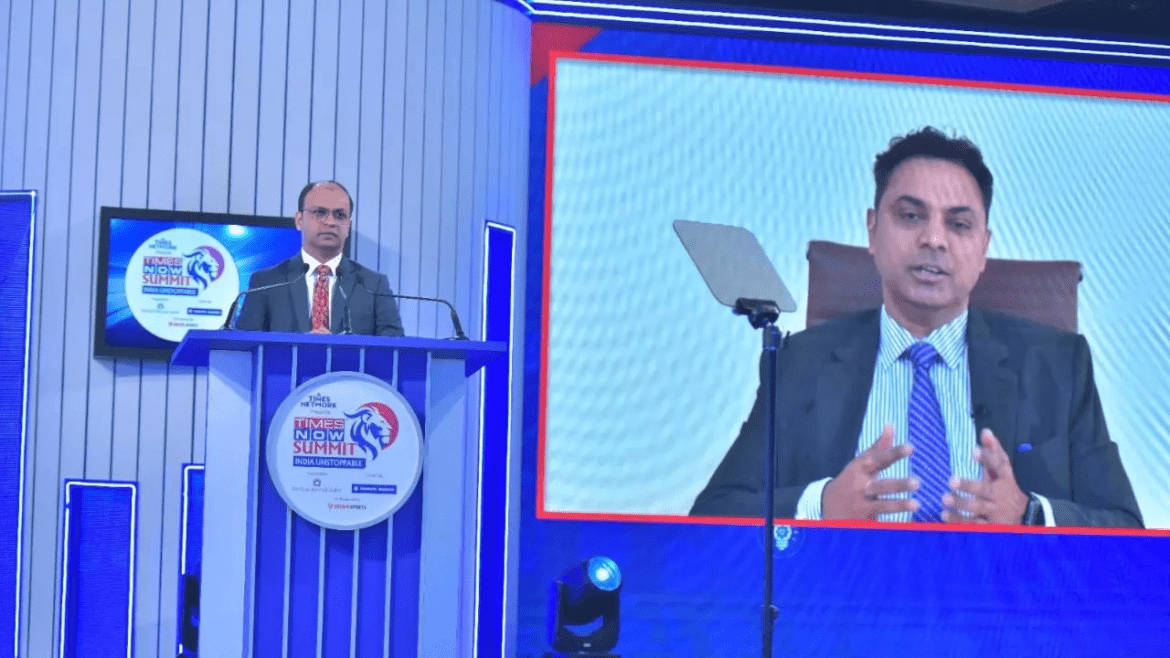AI Generated Summary
- Using the “rule of 72,” which estimates the time it takes for an investment to double based on its annual growth rate, Subramanian detailed how India’s GDP could effectively double every six years with an 8 percent growth rate, a 5 percent inflation rate, and a 1 percent annual depreciation of the rupee against the dollar.
- As India stands on the brink of a new economic era, the path to becoming a $55 trillion economy will demand strategic planning, robust policy implementation, and a collective effort from all sectors of society.
- Subramanian, a former chief economic advisor, highlighted that while the ambition to reach a $55 trillion economy by 2047 might seem daring, it is within reach if India maintains its growth trajectory.
India is on track to transform into a $55 trillion economy by 2047, provided both state and central governments aggressively pursue growth-oriented policies, according to Krishnamurthy V. Subramanian, Executive Director of the International Monetary Fund (IMF). Speaking during the launch of his book India @100 at the Indian School of Business (ISB), Subramanian presented a bold vision for the country’s economic future.
Subramanian, a former chief economic advisor, highlighted that while the ambition to reach a $55 trillion economy by 2047 might seem daring, it is within reach if India maintains its growth trajectory. Currently, the Indian economy stands at approximately $3.25 trillion, and Subramanian outlined a pathway to this ambitious goal through consistent growth.
The key to this forecast, he explained, lies in the power of compounding. Using the “rule of 72,” which estimates the time it takes for an investment to double based on its annual growth rate, Subramanian detailed how India’s GDP could effectively double every six years with an 8 percent growth rate, a 5 percent inflation rate, and a 1 percent annual depreciation of the rupee against the dollar. This compounding effect could result in the Indian economy reaching around $52 trillion by 2047.
Drawing a parallel to Japan’s economic ascent, Subramanian cited Japan’s remarkable growth from $215 billion in 1970 to $5.1 trillion in 1995. This 25-fold increase over 25 years demonstrates that such rapid economic expansion is feasible, he argued, provided the right conditions are met.
Subramanian also pointed to the current disparity in private credit to GDP ratios, noting that India’s 58 percent ratio in 2020 lags significantly behind advanced economies, which have ratios exceeding 200 percent. Despite this, India has made significant strides in financial inclusion through initiatives like the ‘Pradhan Mantri Jan-Dhan Yojana.’
However, Subramanian emphasized that achieving this economic vision requires more than just favorable growth rates. Effective utilization of government borrowings is crucial. Investments should be directed toward creating assets rather than funding subsidies or revenue expenditures. To support sustained growth, India must invest in physical infrastructure, enhance human capital, improve healthcare, and build digital capital.
As India stands on the brink of a new economic era, the path to becoming a $55 trillion economy will demand strategic planning, robust policy implementation, and a collective effort from all sectors of society.




